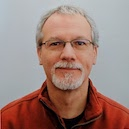
 Speaker "Robert Stewart" Details Back
Speaker "Robert Stewart" Details Back


-
Name
Robert Stewart
-
Company
Castlight Health
-
Designation
CTO
Topic
Segmentation of users by health condition and prediction of future diagnoses
Abstract
Expert systems have long been used in healthcare to classify people into segments based on their medical conditions. However, these approaches can be very brittle, as well as expensive to build and maintain, when used to classify people who are in the early stages of a condition or when the available data is sparse or messy. Machine learning and, in particular, deep learning, can often outperform an expert systems approach in these scenarios in accuracy and cost. This talk will cover the design and results of a system Castlight built that combines deep learning, traditional machine learning, and expert systems to classify users into segments related to their medical conditions using their medical and drug claims, demographic data, application activity, and biometrics. We use the resulting segmentation to deliver personalized recommendations to users directing them to relevant employer-sponsored benefit programs, educational content, and high quality, low-cost medical providers for their condition.
Who is this presentation for?
Healthcare technologists, machine learning engineers
Prerequisite knowledge:
Basic ML background with some exposure to deep learning concepts
What you'll learn?
Profile
Robert is the CTO and Chief Architect at Castlight Health and has been with Castlight since 2011. Castlight's health navigation platform helps its customers' employees and their families improve their health journey, whether they are healthy, managing a condition, or actively seeking medical care. Robert led the engineering teams that built Castlight Action, an automated platform enabling benefits professionals to leverage data and machine learning algorithms to connect employees to the right benefits and programs. Robert is also a Technical Advisor at Computable. He previously held senior development and management positions at Voxify, Avaya, and Lucent Bell Labs and started his career as a research scientist in underwater acoustics designing sonar systems for submarines. He received a Bachelor's Degree in Physics and Philosophy from Rice University.